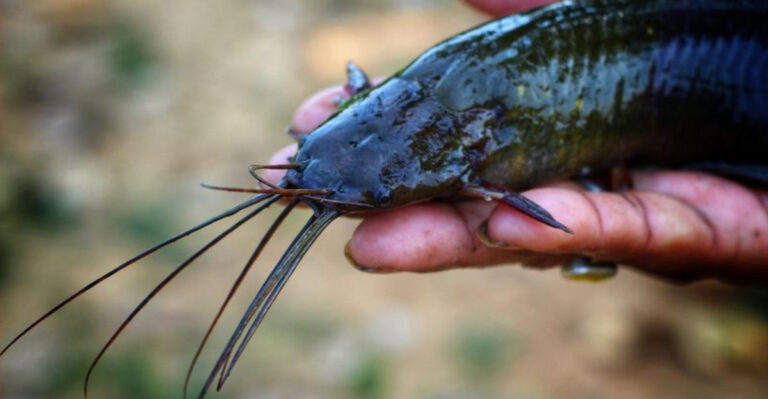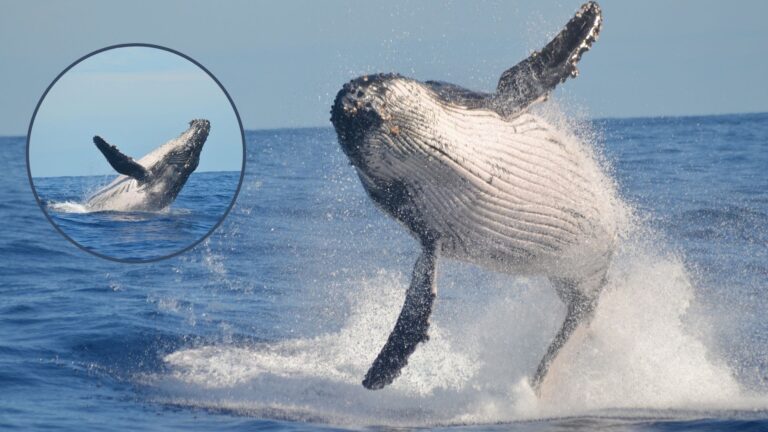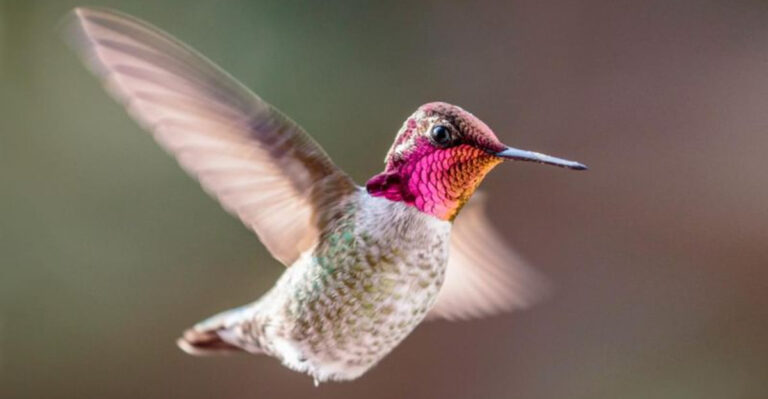12 Snakes That Call The Mississippi River Home
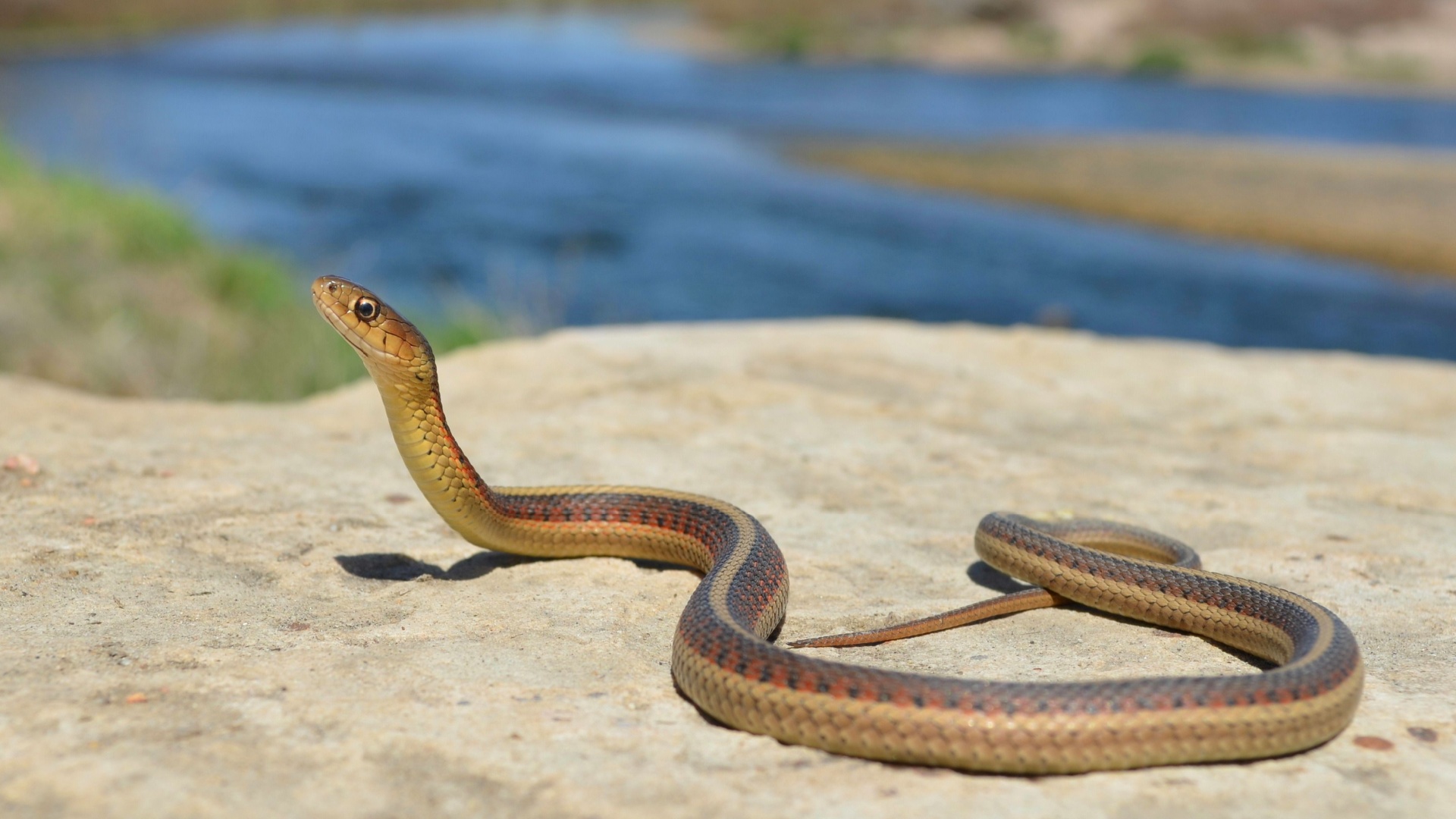
Slithering gracefully through the wetlands and woodlands along the Mississippi River, a plethora of snake species find their home.
This vast riverine ecosystem provides the perfect backdrop for these reptiles to thrive, each with their own unique adaptations and charm. From the harmless to the slightly more menacing, these serpents add to the rich tapestry of life along one of America’s most iconic waterways.
Let’s embark on an engaging exploration of these fascinating creatures.
1. Northern Water Snake
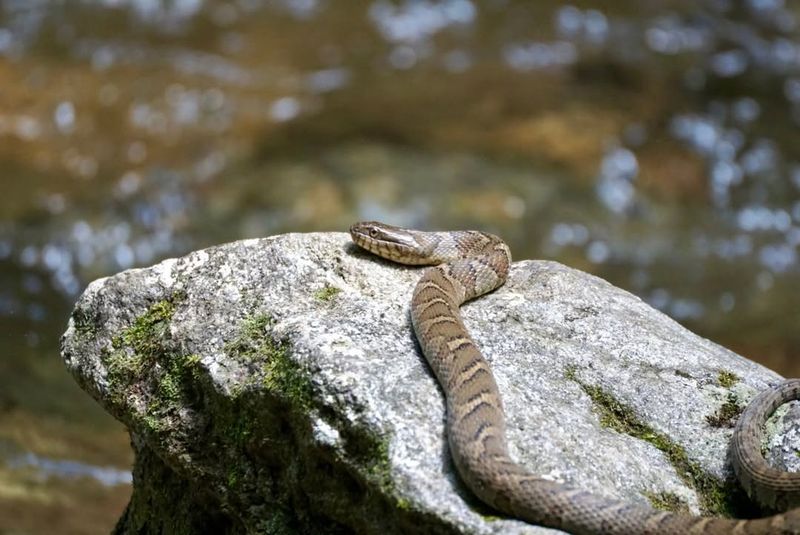
In the calm waters of the Mississippi, the Northern Water Snake makes its presence known.
With a penchant for basking on sunlit rocks, this snake is often mistaken for its venomous cousin, the cottonmouth.
Its banded appearance and agility make it a successful hunter in aquatic environments. Watch it glide effortlessly, blending with its surroundings, a true river resident.
2. Copperhead
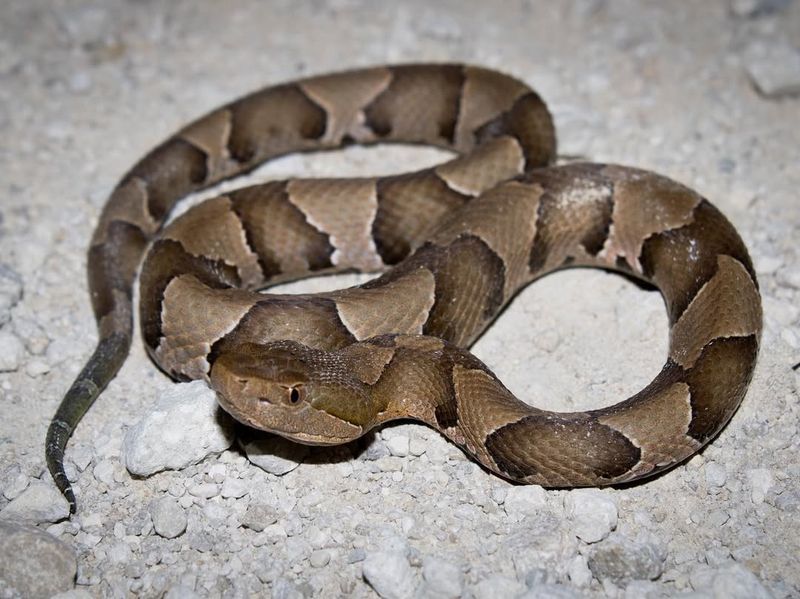
The Copperhead is a master of camouflage, utilizing its copper and chestnut bands to blend seamlessly with the leaf litter. Found in the river’s floodplains, this pit viper prefers rodents and small birds for meals.
Though venomous, its bite is rarely fatal to humans.
Its patient hunting style and ability to remain motionless make it a formidable predator.
3. Western Rat Snake
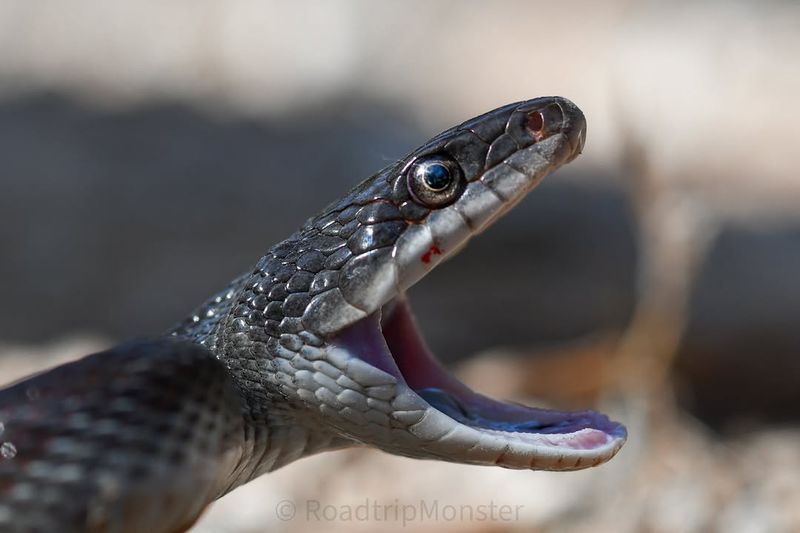
With glossy black scales and impressive climbing skills, this snake often surprises onlookers by appearing in trees or slithering along branches.
Common near riverbanks, the Western Rat Snake plays a vital role in keeping rodent populations in check. Though large in size, it’s completely non-venomous and poses no threat to humans.
Its adaptability makes it a standout in the varied ecosystems surrounding the Mississippi River.
4. Eastern Hognose Snake
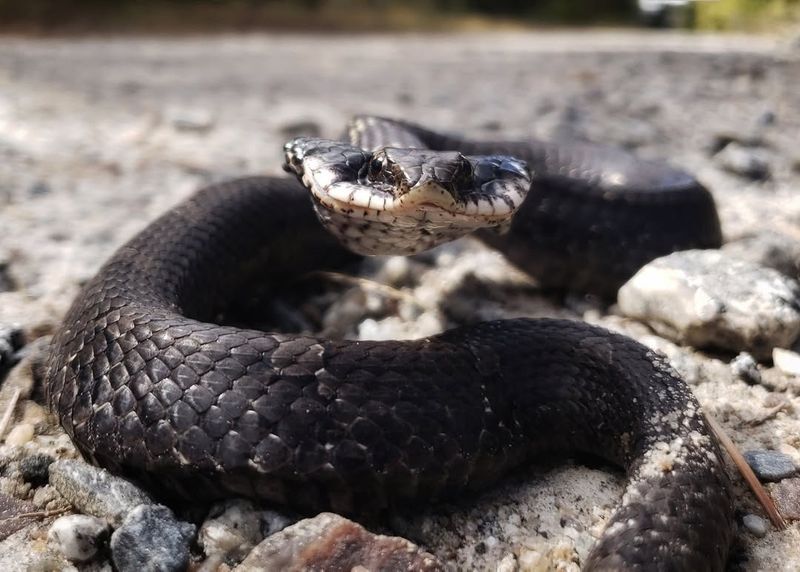
The Eastern Hognose Snake is a drama queen of the snake world, known for its theatrical defensive displays.
When threatened, it flattens its neck and hisses menacingly. Often, it rolls over and pretends to be lifeless as a last resort.
Found in sandy soils near the river, it feeds on amphibians, particularly toads—making its quirky behavior all the more fascinating.
5. Cottonmouth
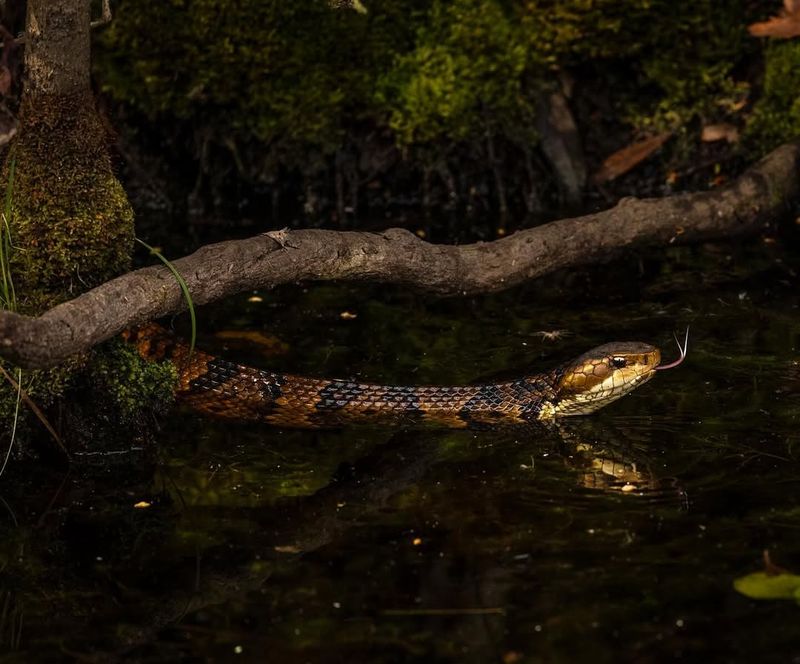
Lurking in the swampy margins, the Cottonmouth is a snake with a reputation. Known for its striking white mouth display, it warns intruders of its presence.
This semi-aquatic viper is often seen swimming or basking near water.
Its behavior and habitat preferences make it a quintessential symbol of the river’s wilder side.
6. Garter Snake
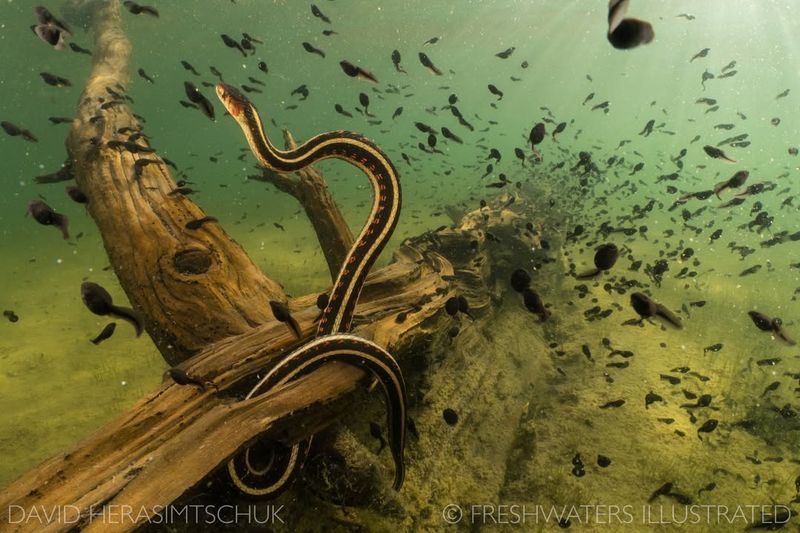
A common sight along the river’s banks, the Garter Snake is easily recognizable by its striped body. This species is adaptable, thriving in various habitats, from marshes to grasslands.
It primarily feeds on amphibians and small fish, using its mild venom to subdue prey.
With its non-threatening nature, it’s a favorite among wildlife enthusiasts observing the river’s diverse snake population.
7. King Snake
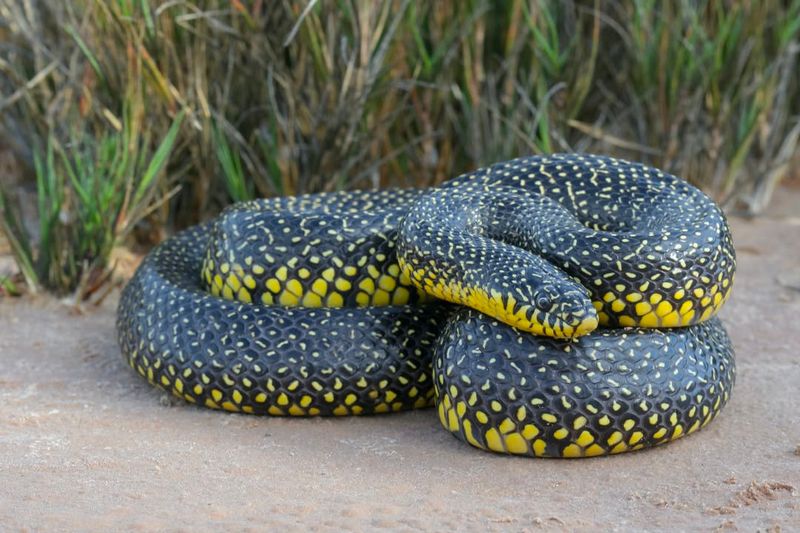
Regal in appearance, the King Snake dons bands of black and white, making it a striking resident of the river basin. Renowned for its immunity to other snakes’ venom, it preys on them, including rattlesnakes.
Its powerful constriction technique and bold coloration ensure it stands out.
This snake’s role as both predator and protector highlights the complex web of interactions within this ecosystem.
8. Eastern Ribbon Snake
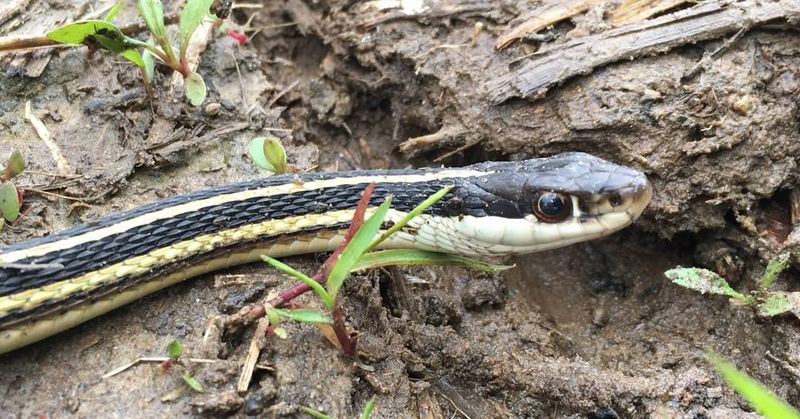
The Eastern Ribbon Snake is a master of agility, navigating the river’s reeds with ease. Its slender, striped body aids in camouflage among the grasses and brush.
Feeding on small fish and amphibians, it’s a crucial part of the river’s food web.
Its graceful movements and vibrant appearance make it a delight for those lucky enough to spot it.
9. Coachwhip Snake
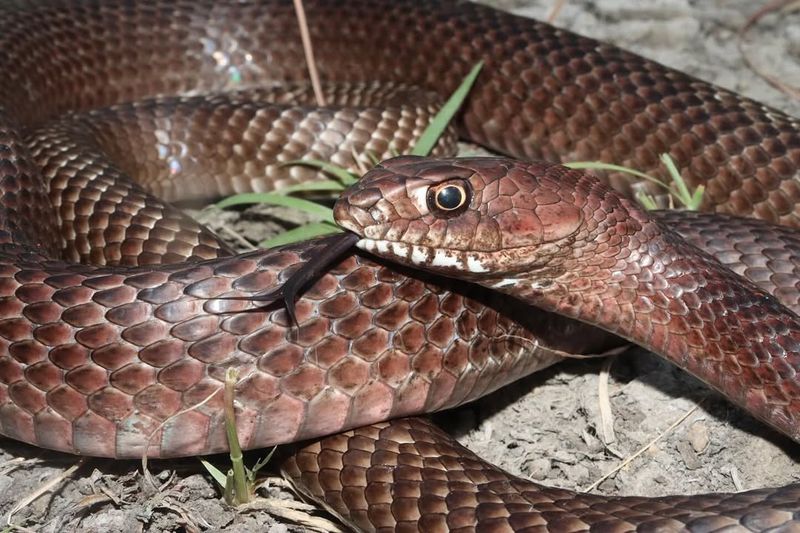
The Coachwhip Snake, with its impressive length, zips through the grasslands and sandy paths near the river. Its scales shimmer like a braided whip, hence its name.
Known for speed and curiosity, it often investigates disturbances, startling unsuspecting visitors.
Though non-venomous, its demeanor and appearance command respect, enhancing the river’s allure with its captivating presence.
10. Brown Snake
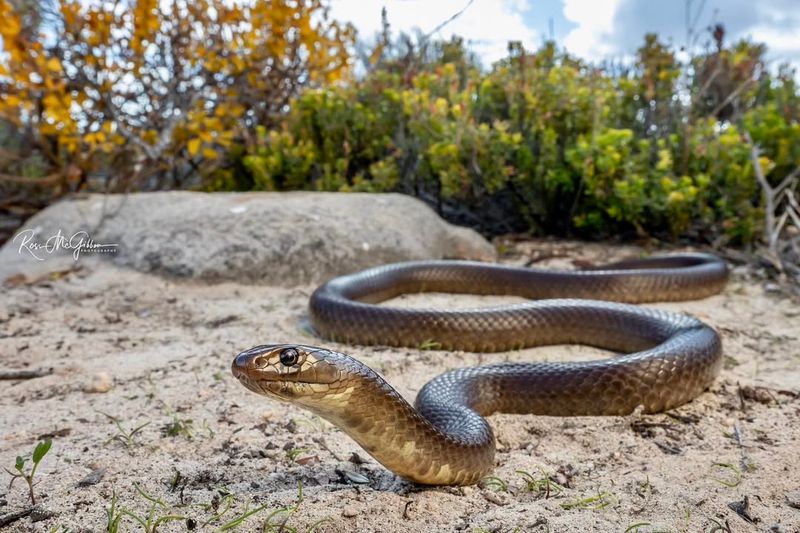
Blending innocuously into the leaf litter, the Brown Snake is a master of disguise. Small and unassuming, it thrives in moist environments where it hunts for slugs and earthworms.
Its subtlety belies an essential ecological role in controlling invertebrate populations.
Observing this snake requires a keen eye, rewarding patient watchers with a glimpse into the river’s hidden life.
11. Ring-Necked Snake
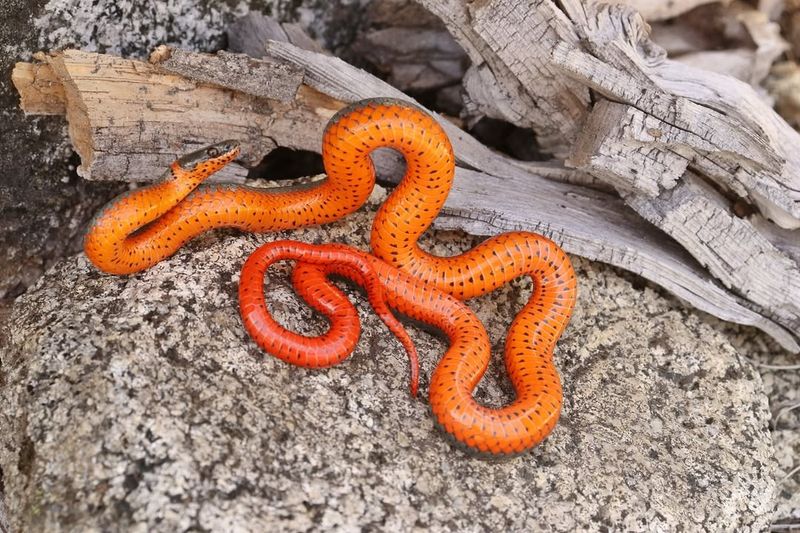
The Ring-necked Snake adds a touch of elegance to the riverine environment. This small, secretive snake is often found under logs or rocks, where it searches for worms and salamanders.
Its striking appearance is matched by its mild-mannered nature.
A delight for naturalists, this snake’s presence is a testament to the river’s thriving ecosystem.
12. Speckled Kingsnake
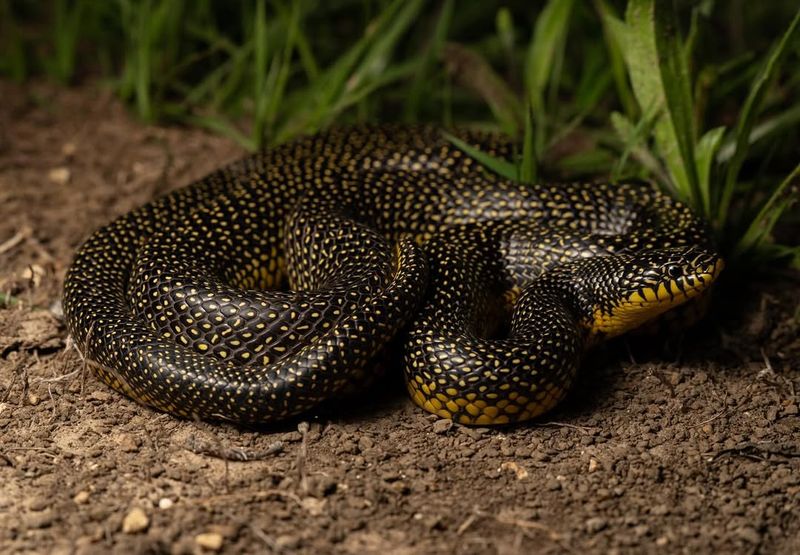
The Speckled Kingsnake, with its black body dotted with yellow spots, is a sight to behold along the river’s edge. Known for its calm demeanor, it preys on a variety of creatures, including other snakes.
Its immunity to venom and striking coloration make it a fascinating subject for herpetologists.
This snake’s adaptability and distinct appearance underscore the rich biodiversity of the Mississippi River.

